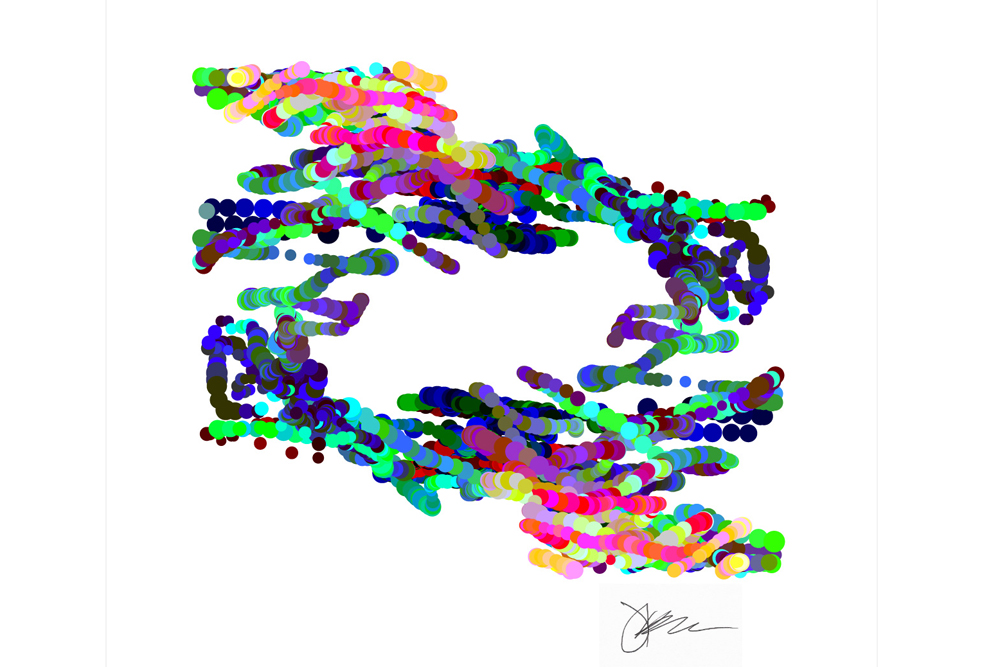
As Patients Create Art, They Recover

Lise Worthen-Chaudhari, an assistant professor of physical medicine and rehabilitation and associate director of the Motion Analysis and Recovery Laboratory at The Ohio State University Wexner Medical Center, contributed to this article on Live Science's Expert Voices: Op-Ed & Insights.
For more than a decade, I’ve conducted research to help patients recover from stroke, spinal cord and traumatic brain injuries. I’ve often wondered how to get them moving in new ways, and how to transform rehabilitation into a fun and interactive healing process. With a background in dance and kinesiology, I found myself trying to connect rehabilitation science to the creative arts in my work.
Through combining principles from dance and today's gaming technology , my research team here at The Ohio State University Wexner Medical Center and I were able to create an interactive computer program designed as a rehabilitation biofeedback tool, a system we called Embedded Arts. Our system involves a creative game that allows patients to enter into a personal "zone" while undergoing rehabilitation. In this interactive experience, patients leave digital brush strokes on a screen when they move.
We tested this method in a clinical trial, during which we detected the movements of 21 patients. Using motion sensors, their body movements were transformed into graphic art on a computer screen. We measured movement in three dimensions, which plotted on a computer screen as an abstract painting — and patients could see the picture evolve in front of them.
Using biophysical sensors, the Embedded Arts tool transformed movement into pictures as part of the healing process for these patients. This enabled them to create fun, individualized images that represented their personal healing, all as part of motions that correlate to standard rehabilitation exercises. In essence, their movements became their medicine.
One goal of this type of therapy is to make rehabilitation more satisfying for patients. The design prompts patients to forget, for the moment, what they can't do, and empowers them to improvise and innovate with structured, therapeutic exercises. In fact, during the trial, therapists reported that the tool helped motivate patients — some of whom lost track of time and focused with better attention and tenacity during difficult movements while using the technology.
This method also aims to increase neuromotor benefits. Interactive applications are extremely promising for use within acute neurorehabilitation, however, they require more development. Neurorehabilitation focuses on improving the quality of life for patients who suffer from a brain or spinal cord injury, or who have a medical condition that affects their mobility or cognitive functions.
Get the world’s most fascinating discoveries delivered straight to your inbox.
While researchers have studied other interactive rehabilitation technologies, most have required cognitive problem-solving or memory function that may be not possible for some patients with low cognitive function. Other therapies have explored the use of the Nintendo Wii or other systems with handheld controllers, but that may be difficult, if not impossible, for patients with paralysis to use. [Why You Forget: 5 Strange Facts About Memory ]
With our new method, patients can heal simply by harnessing their own creativity. I'm committed to incorporating art into the future of medicine because of the positive results I've seen so far. Each design means progress for these patients, serving as their healing art.
Follow all of the Expert Voices issues and debates — and become part of the discussion — on Facebook, Twitter and Google +. The views expressed are those of the author and do not necessarily reflect the views of the publisher. This version of the article was originally published on Live Science.
 Live Science Plus
Live Science Plus






